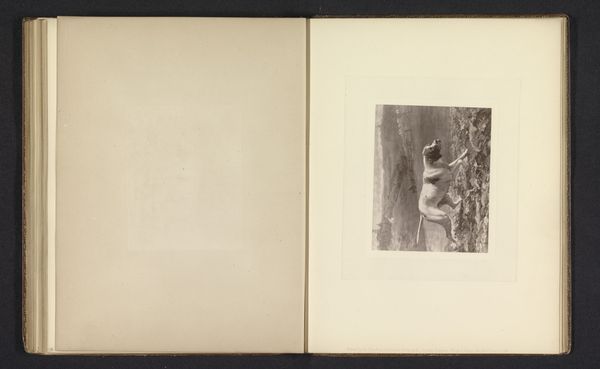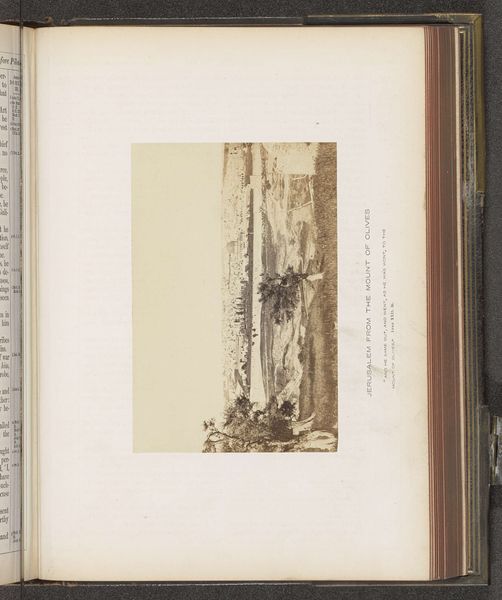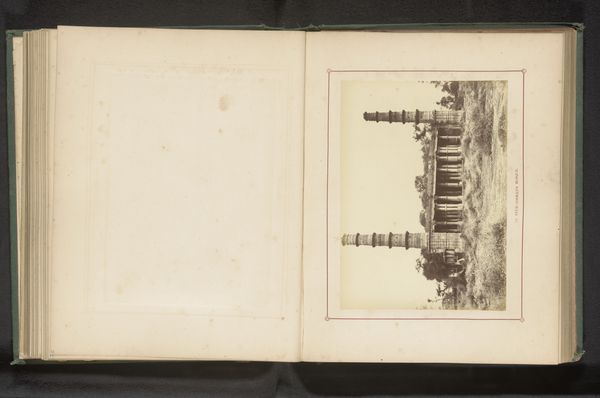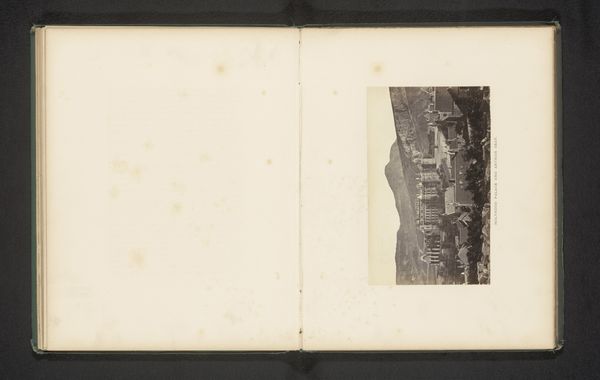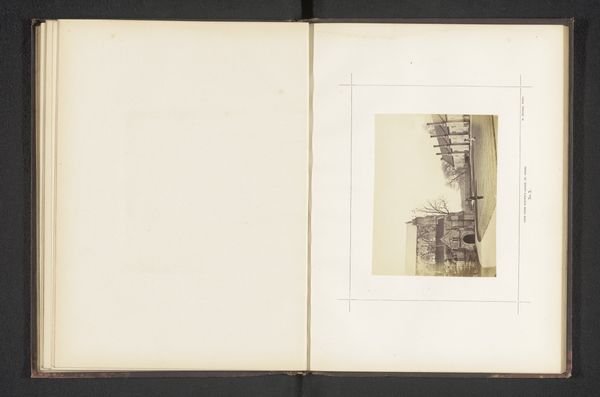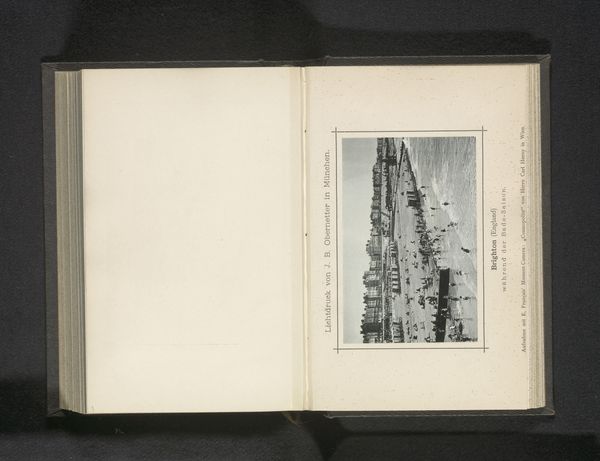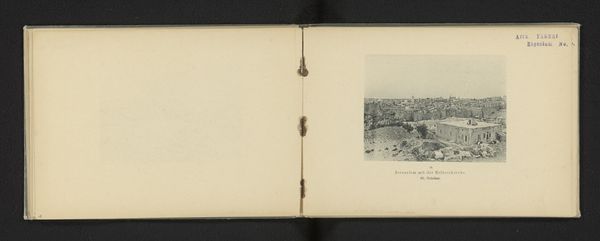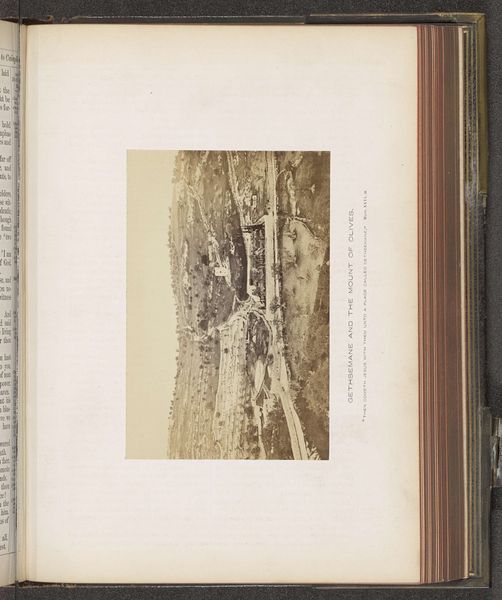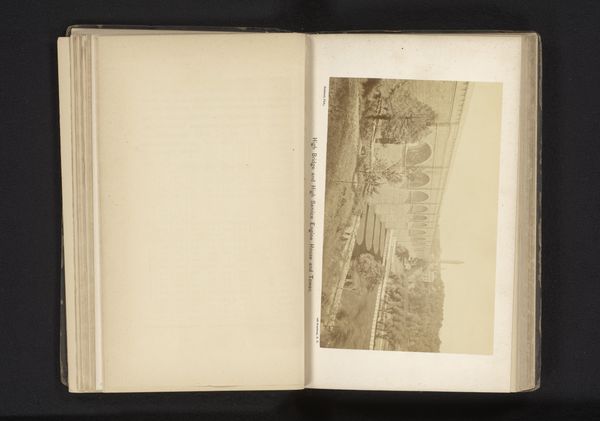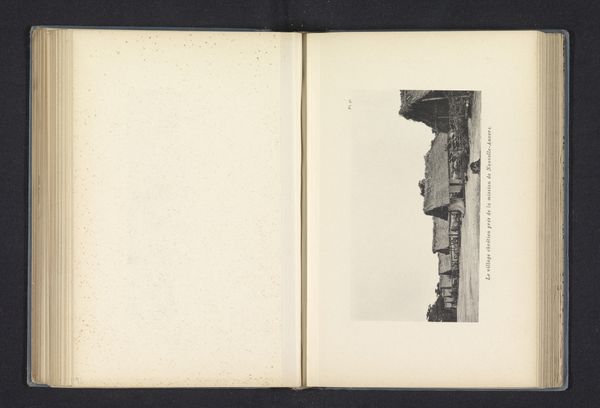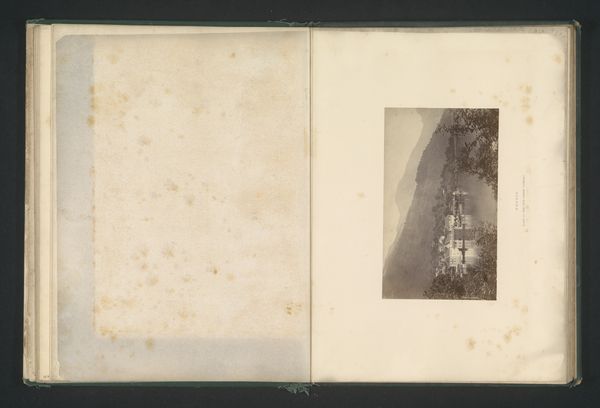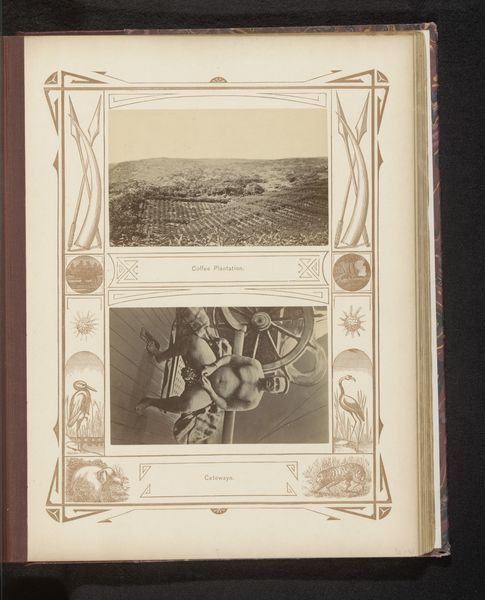
photography, site-specific, architecture
#
sculpture
#
landscape
#
photography
#
romanesque
#
ancient-mediterranean
#
site-specific
#
architecture
Dimensions: height 111 mm, width 66 mm, height 125 mm, width 210 mm
Copyright: Rijks Museum: Open Domain
Editor: Here we have A.G.A. van Eelde’s photograph, "Overblijfselen van het Kapitool te Timgad," possibly from 1927. It’s a black and white image of Roman ruins, showing crumbling columns and what look like fallen building elements. There are three figures standing amongst the ruins. What do you see in this piece? Curator: Immediately, I’m drawn to the labor involved in constructing such monumental architecture. The photograph captures the remnants of an advanced material culture – a system where extracting, shaping, and assembling vast quantities of stone was a key component. Consider the social structures needed to accomplish this; the legions of workers, the specialized craftsmen, and the administrative hierarchy. What kind of consumption drove this massive undertaking? Editor: That's fascinating, I hadn’t thought about the labor aspect. I was focusing more on the aesthetic of decay and the romanticism of ruins. Curator: And that aesthetic is itself a product. Photography here freezes the ruins at a specific point, in 1927, when it serves new imperial ambitions, evoking romantic ideas about power and cultural legacy, now viewed through a colonial lens. But what material practices does photography obscure, particularly given van Eelde’s presence in a colonial context? Think about who could commission this type of work. Editor: So, by focusing on the material aspects, we can see beyond the romantic image and understand the social and economic forces at play in both the creation of the original architecture and the photograph itself? Curator: Precisely. By considering the quarries, the tools, the transportation, the very exploitation of resources needed, we get a much fuller picture of the power structures and networks of value, even now, preserved in this photographic "ruin" nearly 100 years later. Editor: That makes me see the photo, and the ruins themselves, in a totally new light. Thanks! Curator: My pleasure. Always good to think about who profits, who labors, and whose story is really being told in these captured remnants.
Comments
No comments
Be the first to comment and join the conversation on the ultimate creative platform.
